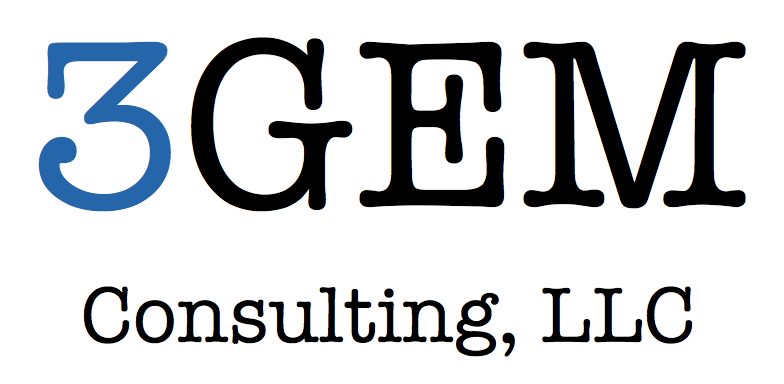3GEM will help you take your learning to the next level!
Content strategy engagements vary basis on client needs. 3GEM has worked with clients looking to revitalize or rethink an existing program, as well as to develop new programs. Have an in-person training that you’re looking to move online? Find that you’re missing the mark in end-of-course evaluations or assessments with an existing program. Your members or stakeholders have learning or training needs that you’re not meeting? 3GEM has more than 25 years of expertise in designing content strategies. We first got started in 2000 in redesigning 1000s of hours of paper-based training guides in automated manufacturing as e-learning - for an audience that had, at the time, never learned online before. Since, we have gone on to design programs for a wide range of audiences, including architects, code designers, medical providers, metalforming companies, forestry professionals, veterinarians and pre-vet students, and more.
Our Process
Content strategy engagements may involve the following elements, depending on your organization’s particular needs.
Environmental Scan
Without knowing where you’re coming from, it’s impossible to know where to go. As such, 3GEM strongly recommends that any content strategy project start with an in-depth environmental scans, with a goal of understanding your specific educational space. In this phase, we will:
Assess the competition, identify potential partnership opportunities, and review lessons learned by your organization and others in your space.
Assess existing content delivered by your organization in the past, including but not limited to sessions at conferences, webinars, online offerings, instructor-led trainings, informal education and more.
Review past metrics for your content, such as evaluation and assessment data, revenue generation, and attendance and completion data.
Explore pain and fail points of this market (i.e. where are other programs failing the market?)
Understand your accreditation requirements, if relevant
Goal Setting and Planning
Next, we try to understand where you’re looking to go, what need you’re looking to fulfill, and what people, processes and tools you will need to achieve it. We do this by:
Interviewing/surveying internal and external stakeholders to understand:
What content would be most useful and have the greatest potential value to them? Least value?
What vendors and/or associations serve as their current content providers (employer, professional associations, other parties)
What content and content formats have they liked/not liked?
What is their preference for online vs. live learning? For live learning, what frequency of meetings would be optimal and what role does location and size play into attendance? If unable to attend a live meeting, would they view live meeting recordings as a viable online alternative? If able to attend live meetings, what would be the appetite for an enduring offering resulting from it (e.g. recordings, PPTs, notes)?
What would be the determinants in potentially buying learning from your organization?
What is their confidence in the your organization?
What are their average annual learning budgets and how is their professional development typically funded?
Evaluating your content lifecycle process and capabilities/limitations (e.g. frequency of updates, purchasing cycle)
Reviewing revenue goals and typical pricing models for your organization
Understanding state certification and re-certification requirements (total credits, live vs. online, reporting processes and requirements).
Exploring landscape of existing and needed learning technology as applicable to your organization (identify short and long-term wins and subsequent technology needs)
Identifying change management requirements as it relates to growing your organization’s esteem and presence in learning space - market opinion, "competing" associations and companies, certification, integrations, etc.
Identifying potential partners for content development and/or delivery
Strategic Plan
In this phase, we leverage findings from the first two phases to develop a strategic plan outlining the vision and goals for your education program, with specific recommendations to execute this strategy. A typical plan includes:
Tactical recommendations for building short, medium and long-term strategy to establish, grow or validate your presence, including:
Recommended org chart, required skillsets and operational model
Low-hanging fruit for achieving short-term goals
Technological requirements for content development
Re-packaging/re-development of existing content
Pilot offerings and early adopter programs
Partnerships with content, technology or other related providers
Stakeholder involvement
Delivery modalities (face-to-face; webinar; self-paced/asynchronous online including slides, PPTS, SCORM, videos, articles, etc.; blended learning; mobile learning, web-based, mobile delivery)
Initial development goals
Content development processes, including costs, involved parties, review cycles, potential certification, etc.
Feedback mechanisms and outcomes scorecards/analytics
It’s never too soon or too late to get started with your content strategy!


